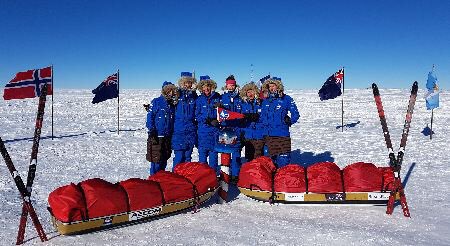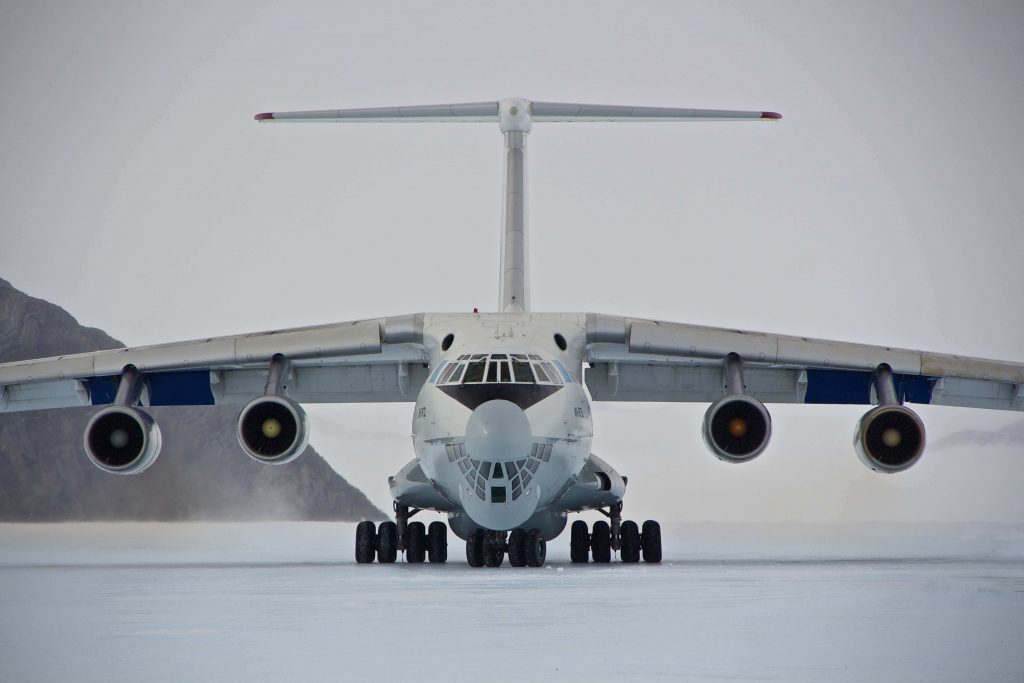It has been another busy couple of days in the Antarctic where the teams continue to hit milestones on their various expeditions. By now, most everyone has settled into a routine and have hit their stride, which makes it easier to cover the miles, even if they all still face major challenges ahead.
For the
Spectre team of Leo Houlding, Jean Burgun, and Mark Sedon the next stage of their journey is clear. The boys have abandoned the Gothic Mountains after achieving their goal of summiting the Spectre rock spire this past weekend and are now turning for home. They left this morning while experiencing the best weather of the trip so far. Eventually they'll deploy their kites to help speed them along back to the coast, but for now they're man hauling it while they work through an area thick with crevasses and snow bridges.
Before leaving, the team spent the past few days continuing to climb in the area. They had knocked off the Spectre, completing the second ascent of that tower from the north, and yesterday they mad a trick ascent to the summit of another rock face called Organ Pipe A. The climb was tricky over mixed terrain that included rock, snow, and ice. There were few cracks to use as holds or to install climbing aids, but they still managed to make it to the top, and rappel back down. The weather was reportedly fantastic, and it was a good way to cap the climbing portion of the expedition. Now, they're simply focused on the return trip.
Ben Saunders is a long way away from starting the final stage of his journey across the Antarctic but he did hit another major milestone today. On his march to the South Pole, the British polar explorer has now crossed 87ºS as he closes in on the bottom of the world. He now has roughly 590 miles (949 km) to go before he is done, and he knows it won't be easy.
The day began with a large sastrugi field that made for tough going, zapping the legs and slowing progress. Later in the day, the surface flattened out however allowing Saunders to ski more naturally for one of the first times since he returned to the antarctic. It isn't likely to last, as the area after the 87th degree is known to be a sastrugi minefield, but he'll take what he can get while it lasts. At the moment, he's knocking off about 14 miles (22 km) per day, which means it'll likely take all of the 65 days he predicted – and perhaps then some – to complete the traverse.
Father and son team
Rob and Barney Swan hit the halfway point of their expedition today, 23 days into their march. The duo are skiing to the South Pole via the standard route that begins at Hercules Inlet. They've now reached the Thiel Mountains and have experienced a couple of days of excellent weather with warmer temperatures, lighter winds, and blue skies overhead. In other words, perfect ski conditions that have allowed them to cover about 10 miles (16 km) per day.
Rob and Barney are making this journey to promote the use of alternate sources of fuel and clean energy products. Of course, like everyone else in the antarctic, they're using solar panels to charge their electronic gear, but they are also using a new biofuel from
Shell in their stoves. So far, this is proving to be clean and efficient, not causing them any problems with blocked fuel lines or burning through too much gas.
They are also using solar powered snow melters to create fresh drinking water too, which is a serious innovation for polar travel. Normally, expeditions heading to the North or South Pole, or even up big mountains, have to spend an inordinate amount of time melting snow so they have water to drink or use in their food preparation. But The Swans have a new device that melts the snow while they ski, allowing them to save a lot of time and energy. I'll be curious to find out how this works, as will a number of others who follow polar expeditions closely.
Finally, the
Ice Maidens continue to pick up steam on their way to towards the South Pole. Yesterday was their first 30 km (18 mile) day, which means they have certainly found their groove. They still have a long way to go to reach their goal of becoming the first all-women's team to traverse across the continent, but the ladies have more than demonstrated their strength, determination, and skill out on the ice.
More updates soon!











.jpg?format=750w)

